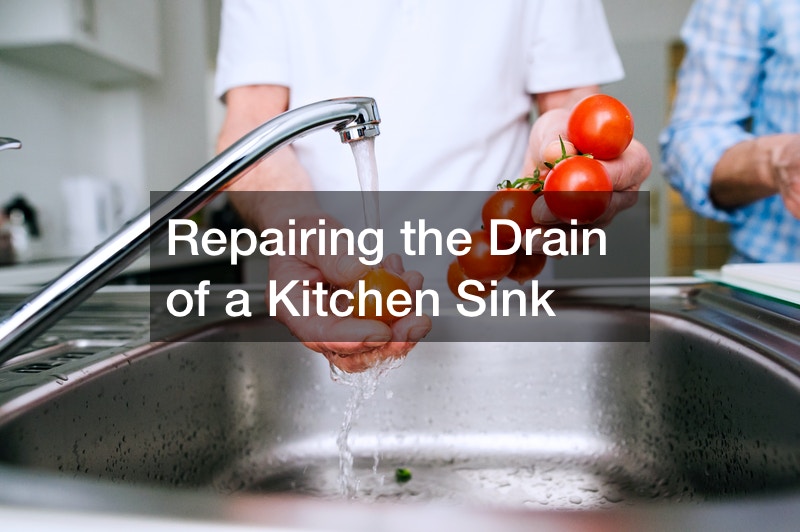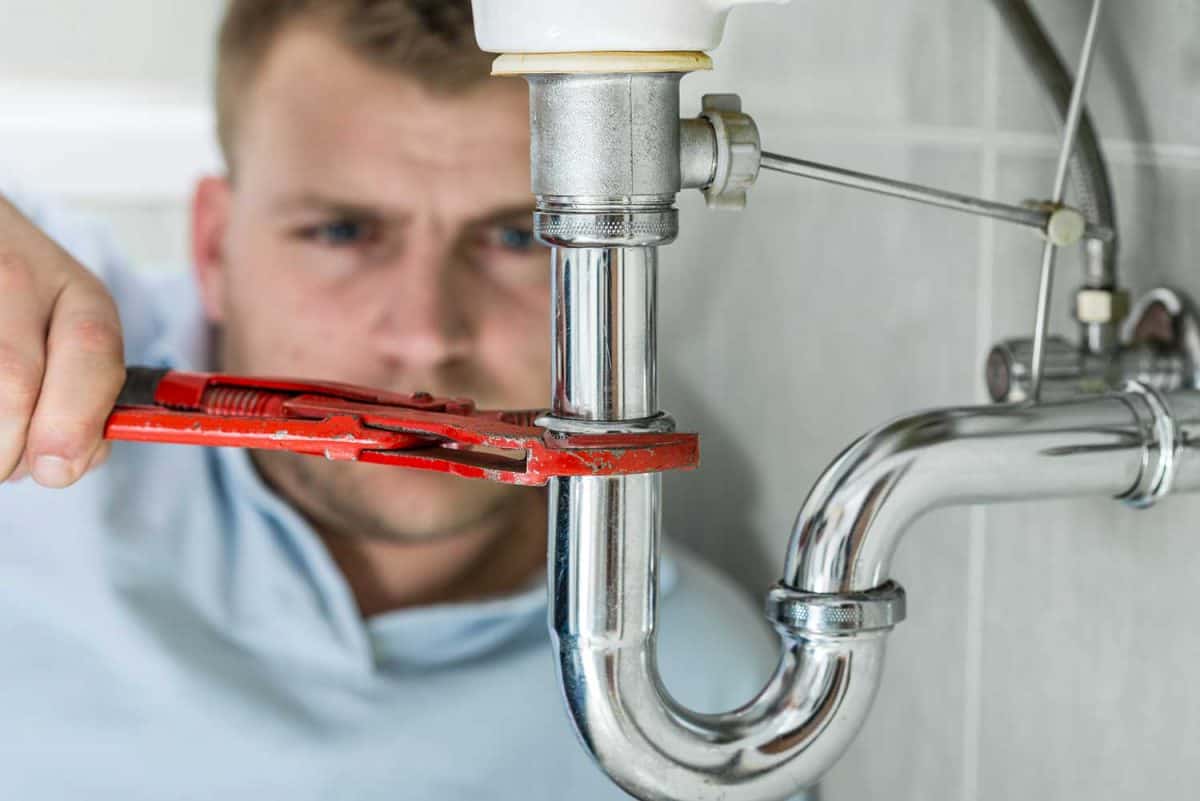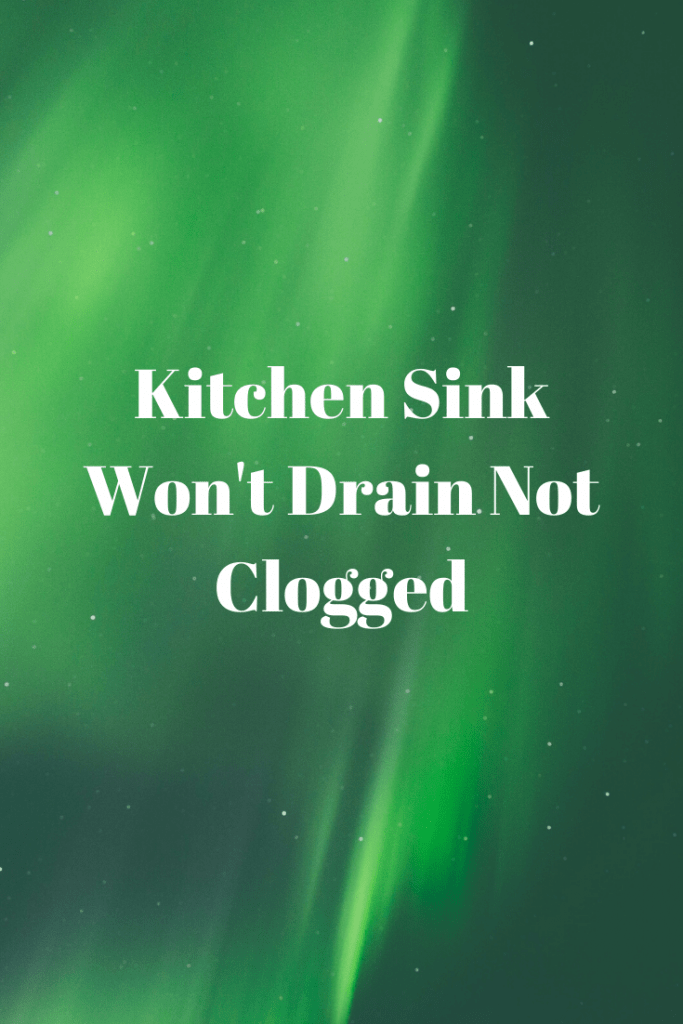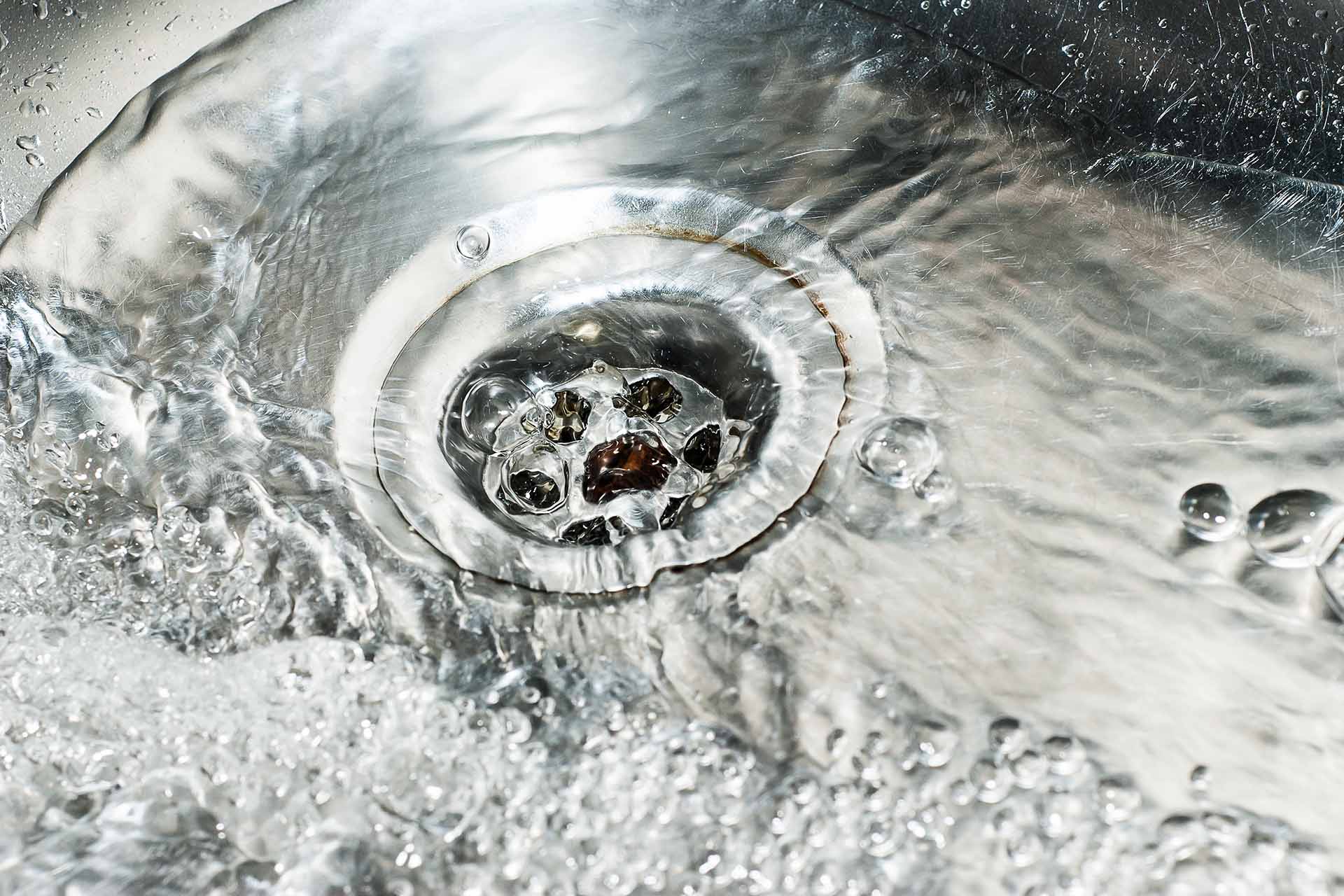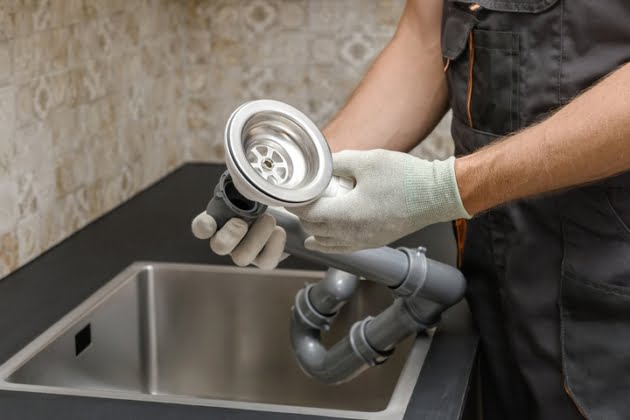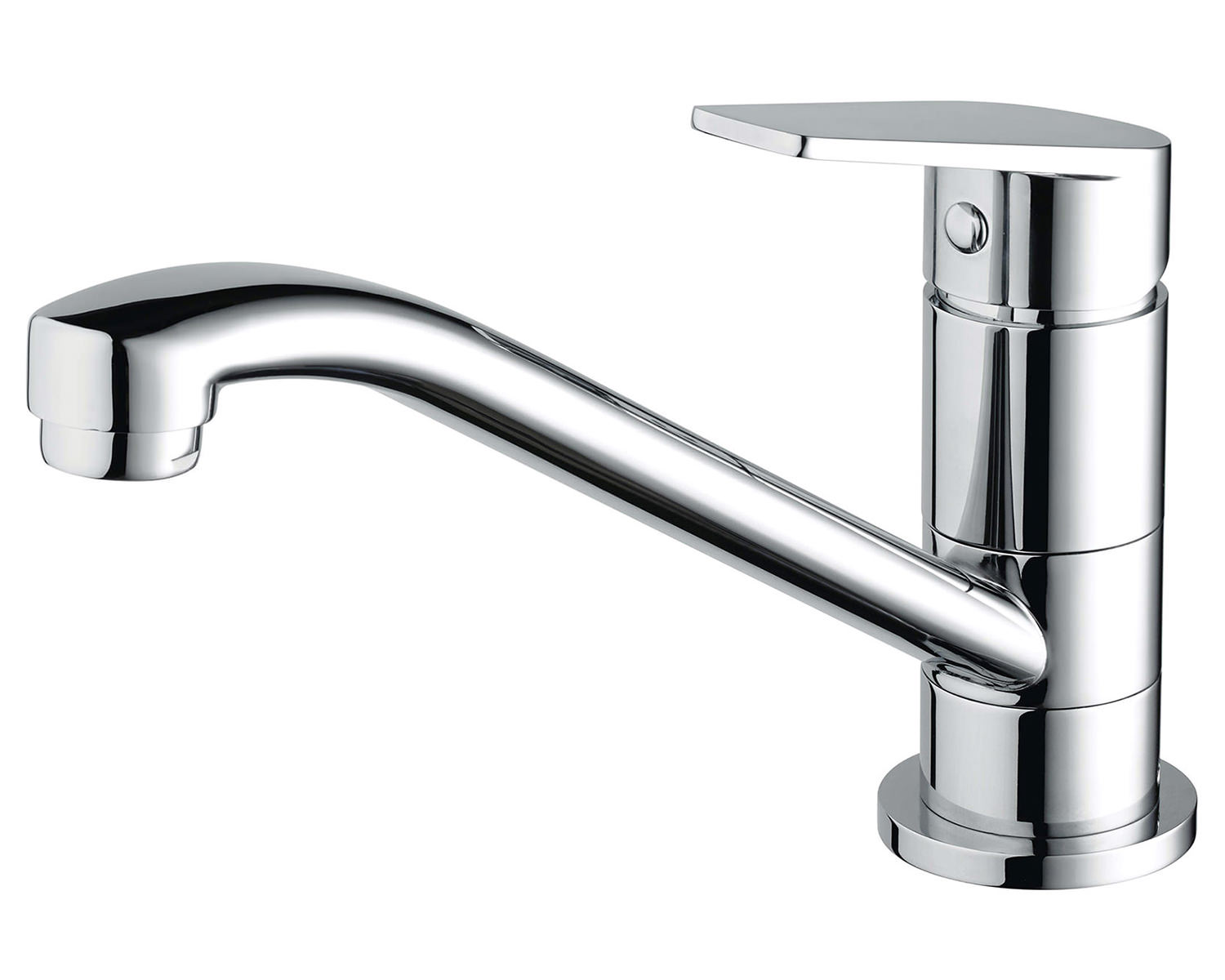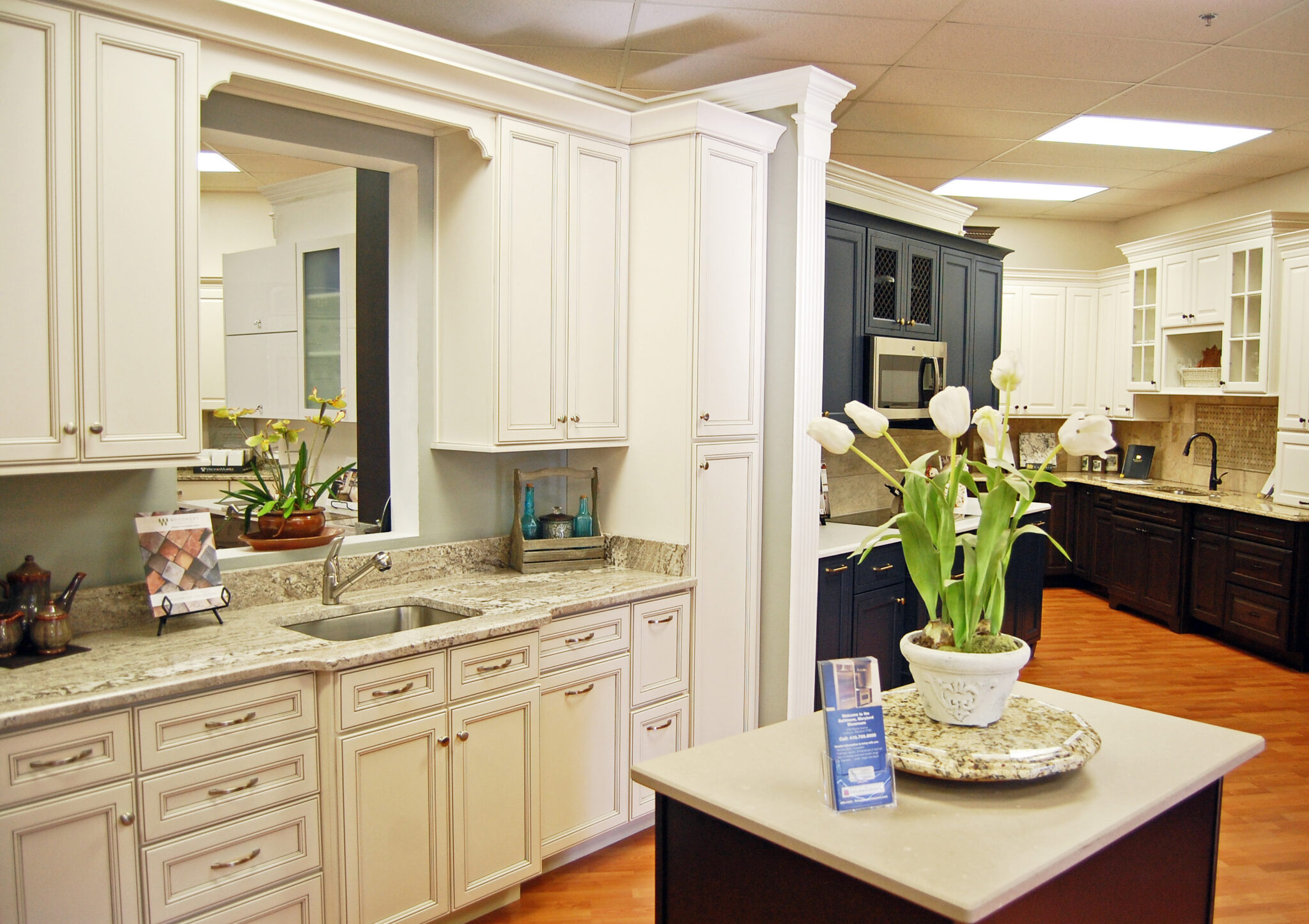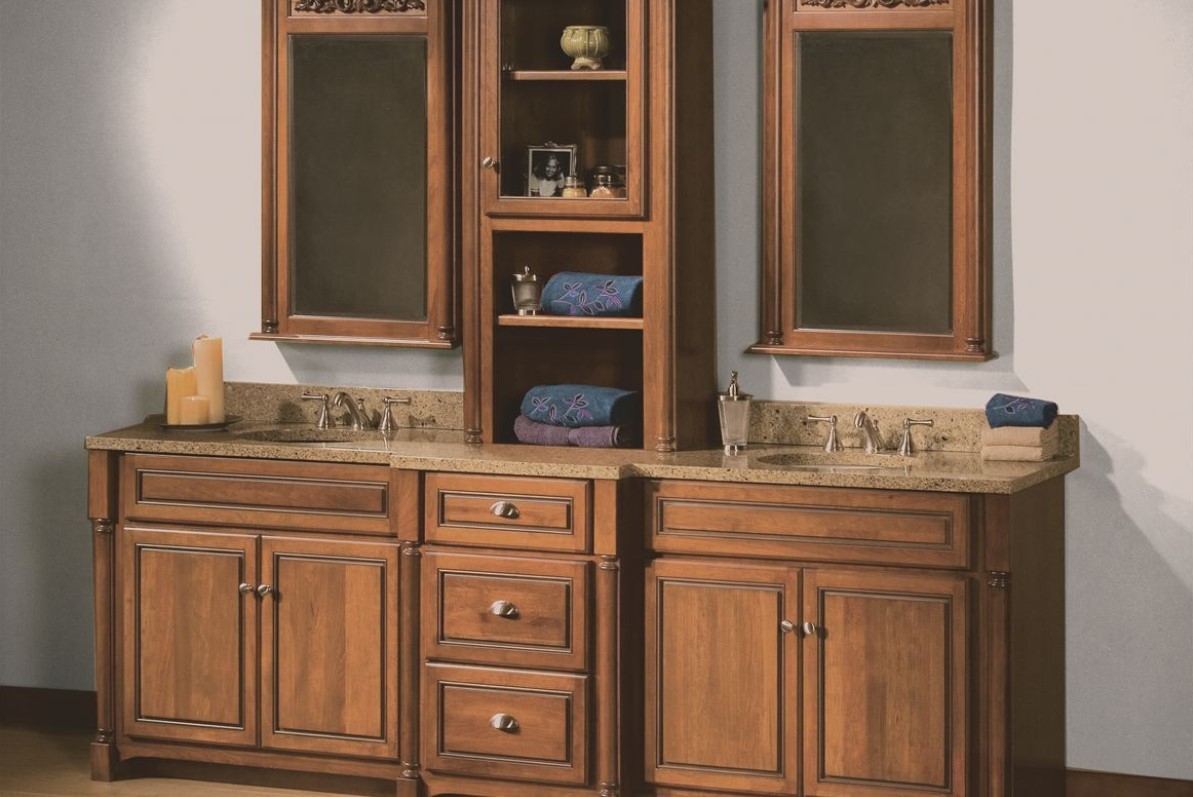Clogged kitchen sink drains can be a major inconvenience in any household. Not only does it prevent you from using your sink, but it can also lead to unpleasant odors and potential water damage. The good news is, you can easily unclog a kitchen sink drain using some basic tools and household items. The first step is to try using a plunger to dislodge the clog. Make sure to cover the second drain in a double sink with a wet cloth or plug to create a seal. Then, fill the sink with enough water to cover the plunger and start plunging up and down vigorously. This should create enough suction to loosen and remove the clog. If the plunger doesn't work, you can try using a drain snake. Insert it into the drain and twist it while pushing it in and out to break up the clog. You can also try pouring boiling water down the drain to dissolve any grease or soap buildup. For tougher clogs, a mixture of baking soda and vinegar can also be effective.1. Unclog a Kitchen Sink Drain
If the clog is still stubborn, you may need to remove the trap under the sink to clear out any debris. Place a bucket under the trap to catch any water and use a wrench to loosen the slip nuts and remove the trap. Clean out any visible debris and use a straightened wire hanger to remove any clogs that may be stuck inside the pipes. After reattaching the trap, run hot water down the drain to flush out any remaining debris. If this still doesn't work, you may need to call a professional plumber, as the clog may be further down in the pipes and require specialized tools to remove.2. How to Fix a Clogged Kitchen Sink
Minor issues with your kitchen sink drain can often be fixed with some simple DIY methods. For example, a dripping kitchen sink drain can be fixed by tightening the nuts and bolts around the drain using a wrench. If the drain is leaking from the bottom, you may need to replace the rubber gasket or the entire drain assembly. If your kitchen sink is slow draining, it may be due to a buildup of grease and debris in the pipes. To fix this, you can use a mixture of hot water, vinegar, and baking soda to dissolve the buildup and clear the drain. Regularly pouring boiling water down the drain can also help prevent future clogs.3. DIY Kitchen Sink Drain Repair
If you're experiencing issues with your kitchen sink drain, it's important to troubleshoot the problem to determine the best course of action. Start by identifying the type of sink you have - whether it's a single or double sink, and whether it has a garbage disposal. Next, try to determine the cause of the issue. Is the drain clogged, leaking, or not draining at all? This will help you determine the appropriate solution, whether it's using a plunger, drain snake, or calling a professional plumber.4. Troubleshooting a Kitchen Sink Drain
A leaky kitchen sink drain is not only frustrating, but it can also lead to water damage and mold growth. If you notice water dripping from your drain, it's important to fix the issue as soon as possible. First, try tightening the nuts and bolts around the drain using a wrench. If this doesn't work, you may need to replace the rubber gasket or the entire drain assembly. Make sure to turn off the water supply to the sink before attempting any repairs, and if you're not comfortable doing it yourself, don't hesitate to call a professional.5. Repairing a Leaky Kitchen Sink Drain
A slow draining kitchen sink can be a sign of a clog in the pipes. To clear the clog, you can try using a plunger or a drain snake, as mentioned earlier. You can also try using a mixture of hot water, vinegar, and baking soda to dissolve the buildup and clear the drain. If the clog persists, you may need to remove the trap and clean out any debris that may be stuck inside. It's also a good idea to regularly clean your kitchen sink drain by pouring boiling water down it to prevent future clogs.6. Clearing a Slow Draining Kitchen Sink
If your kitchen sink drain is broken, it will need to be replaced. This is a more complex repair that may require the help of a professional plumber. It's important to turn off the water supply to the sink and remove any remaining water before attempting to remove the old drain. You can purchase a new drain assembly at a hardware store and follow the instructions to install it. If you're not confident in your plumbing skills, it's best to leave this repair to a professional to ensure it is done correctly and prevent any further damage.7. Fixing a Broken Kitchen Sink Drain
The steps for repairing a kitchen sink drain will vary depending on the specific issue you're experiencing. However, the general steps would include identifying the problem, gathering the necessary tools and materials, and following repair instructions or consulting a professional plumber. Some common steps for repairing a kitchen sink drain include turning off the water supply, removing the trap, cleaning out any debris, and replacing the gasket or drain assembly if necessary. It's important to take caution and follow safety guidelines, and if the repair seems too complex, don't hesitate to call a professional.8. Steps for Repairing a Kitchen Sink Drain
Prevention is key when it comes to maintaining a healthy kitchen sink drain. Here are some tips to help you avoid common issues and keep your drain functioning properly:9. Kitchen Sink Drain Repair Tips
Some common problems that can occur with kitchen sink drains include clogs, leaks, and broken/damaged parts. These issues can usually be resolved with some basic repairs or by calling a professional plumber. To prevent these issues, make sure to regularly clean your drain and avoid putting anything down the drain that could cause a clog. If you do experience a problem, troubleshoot the issue and determine the best solution, whether it's using a plunger, drain snake, or calling a professional. With proper maintenance and care, your kitchen sink drain should function smoothly for years to come.10. Common Kitchen Sink Drain Problems and Solutions
Why Repairing Your Kitchen Sink Drain is Essential for a Functional and Beautiful Home

The Importance of a Well-Functioning Kitchen Sink Drain
 A kitchen sink is one of the most frequently used areas in a home. From washing dishes to preparing meals, it is where many essential tasks take place. And at the heart of your kitchen sink is the drain. A properly functioning drain is crucial for a smooth and efficient kitchen experience. It not only helps to keep your sink clean and free of standing water, but it also prevents clogs and potential water damage. Therefore, when your sink drain starts to malfunction, it is important to address the issue promptly.
A kitchen sink is one of the most frequently used areas in a home. From washing dishes to preparing meals, it is where many essential tasks take place. And at the heart of your kitchen sink is the drain. A properly functioning drain is crucial for a smooth and efficient kitchen experience. It not only helps to keep your sink clean and free of standing water, but it also prevents clogs and potential water damage. Therefore, when your sink drain starts to malfunction, it is important to address the issue promptly.
Signs that Your Kitchen Sink Drain Needs Repair
 Leaking water
, slow drainage, and foul odors are some of the common signs that your kitchen sink drain needs repair. These issues can be caused by various factors such as clogs, damaged pipes, or worn-out parts. Ignoring these signs can lead to bigger problems in the future and can even affect the overall functionality and aesthetics of your kitchen.
Leaking water
, slow drainage, and foul odors are some of the common signs that your kitchen sink drain needs repair. These issues can be caused by various factors such as clogs, damaged pipes, or worn-out parts. Ignoring these signs can lead to bigger problems in the future and can even affect the overall functionality and aesthetics of your kitchen.
The Benefits of Repairing Your Kitchen Sink Drain
 Repairing your kitchen sink drain can bring numerous benefits to your home. Firstly, it ensures that your sink remains clean and free of standing water, preventing bacteria and mold growth. This, in turn, promotes a healthier environment for you and your family. Secondly, it helps to maintain the proper functioning of your plumbing system, preventing costly repairs in the long run. And lastly, a repaired kitchen sink drain can enhance the overall look and feel of your kitchen, making it a more enjoyable and beautiful space to work in.
Repairing your kitchen sink drain can bring numerous benefits to your home. Firstly, it ensures that your sink remains clean and free of standing water, preventing bacteria and mold growth. This, in turn, promotes a healthier environment for you and your family. Secondly, it helps to maintain the proper functioning of your plumbing system, preventing costly repairs in the long run. And lastly, a repaired kitchen sink drain can enhance the overall look and feel of your kitchen, making it a more enjoyable and beautiful space to work in.
Leave it to the Professionals
 While some minor drain issues can be tackled on your own, it is always best to leave the more complex repairs to the professionals.
Experienced plumbers
have the necessary skills and tools to accurately diagnose and fix any drain problem efficiently and effectively. They can also provide expert advice on how to properly maintain your sink drain to prevent future issues.
While some minor drain issues can be tackled on your own, it is always best to leave the more complex repairs to the professionals.
Experienced plumbers
have the necessary skills and tools to accurately diagnose and fix any drain problem efficiently and effectively. They can also provide expert advice on how to properly maintain your sink drain to prevent future issues.
Conclusion
 In conclusion, a well-functioning kitchen sink drain is essential for a functional and beautiful home. If you notice any signs of a malfunctioning drain, do not hesitate to address the issue. And remember, always seek the help of professionals for the best results. With a repaired kitchen sink drain, you can enjoy a clean, efficient, and aesthetically pleasing kitchen for years to come.
In conclusion, a well-functioning kitchen sink drain is essential for a functional and beautiful home. If you notice any signs of a malfunctioning drain, do not hesitate to address the issue. And remember, always seek the help of professionals for the best results. With a repaired kitchen sink drain, you can enjoy a clean, efficient, and aesthetically pleasing kitchen for years to come.
/plumber-unclogging-kitchen-sink-169270382-5797a9355f9b58461f27f024.jpg)






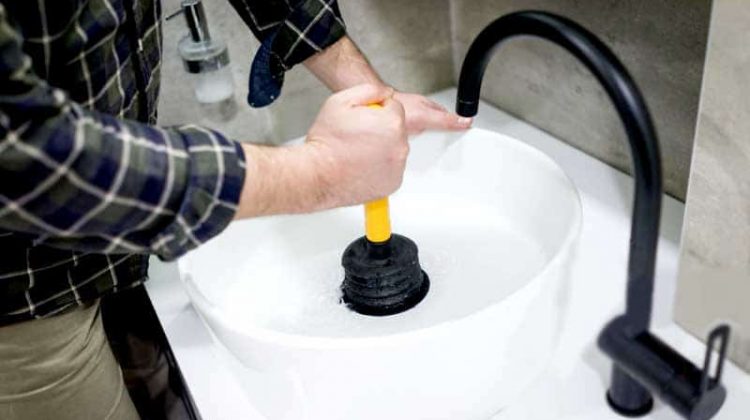
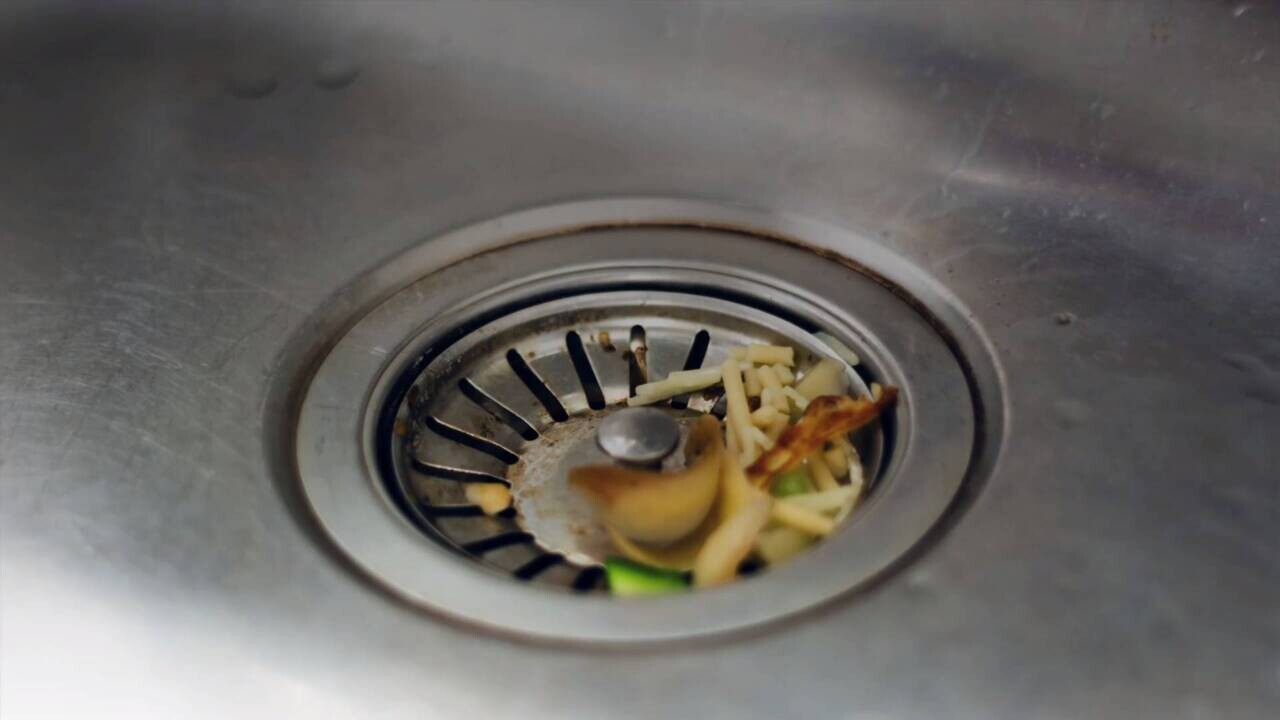
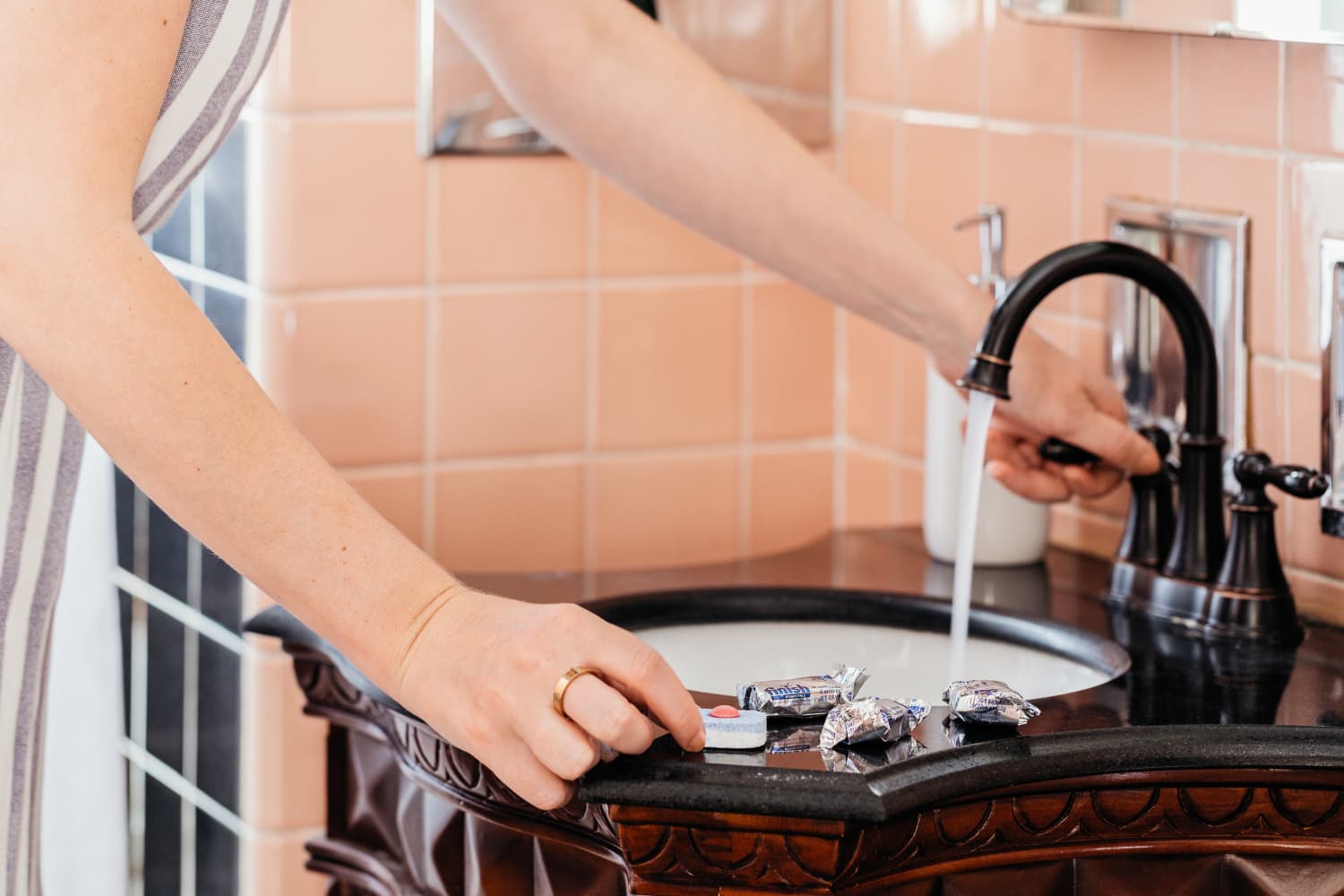








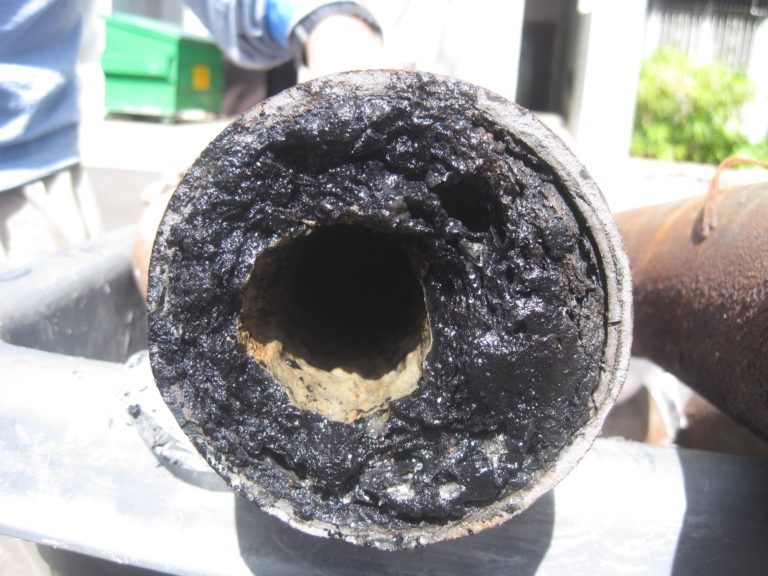





















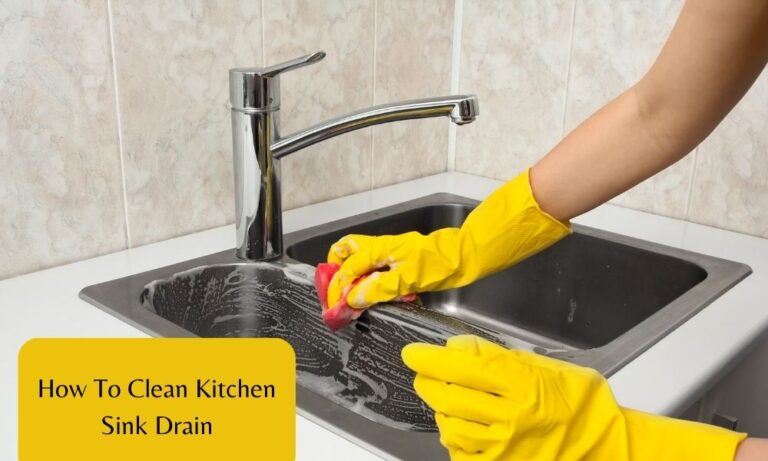










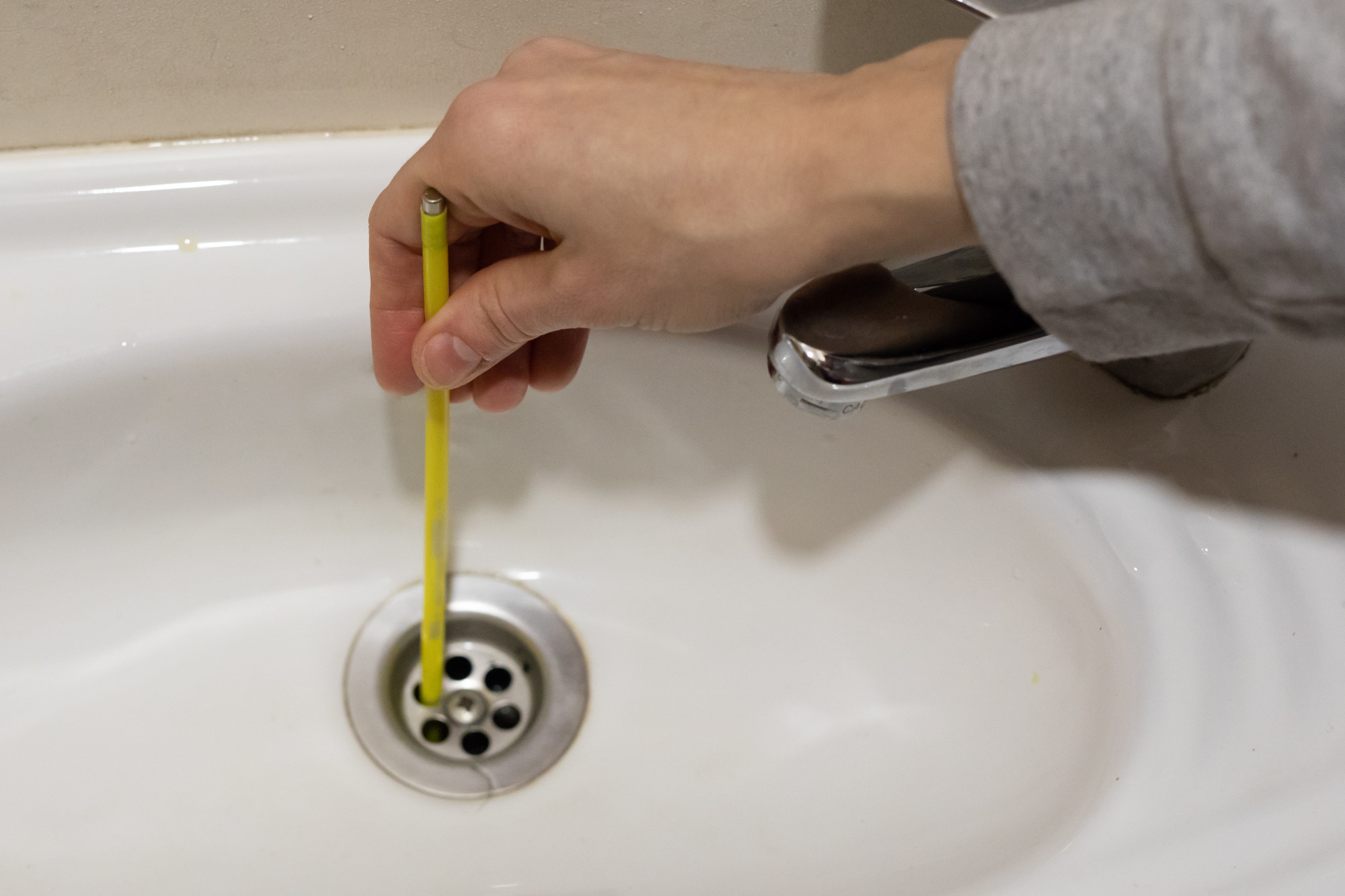



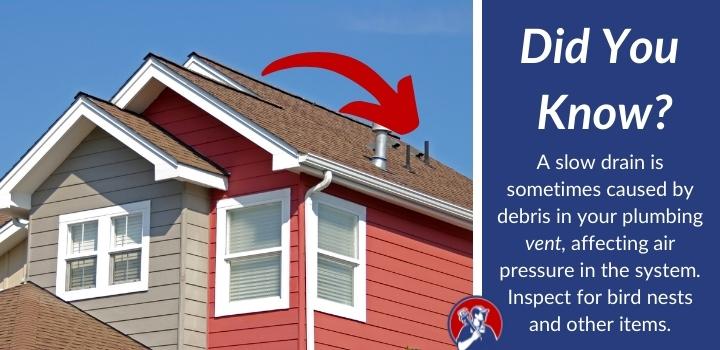











:max_bytes(150000):strip_icc()/how-to-install-a-sink-drain-2718789-hero-24e898006ed94c9593a2a268b57989a3.jpg)
